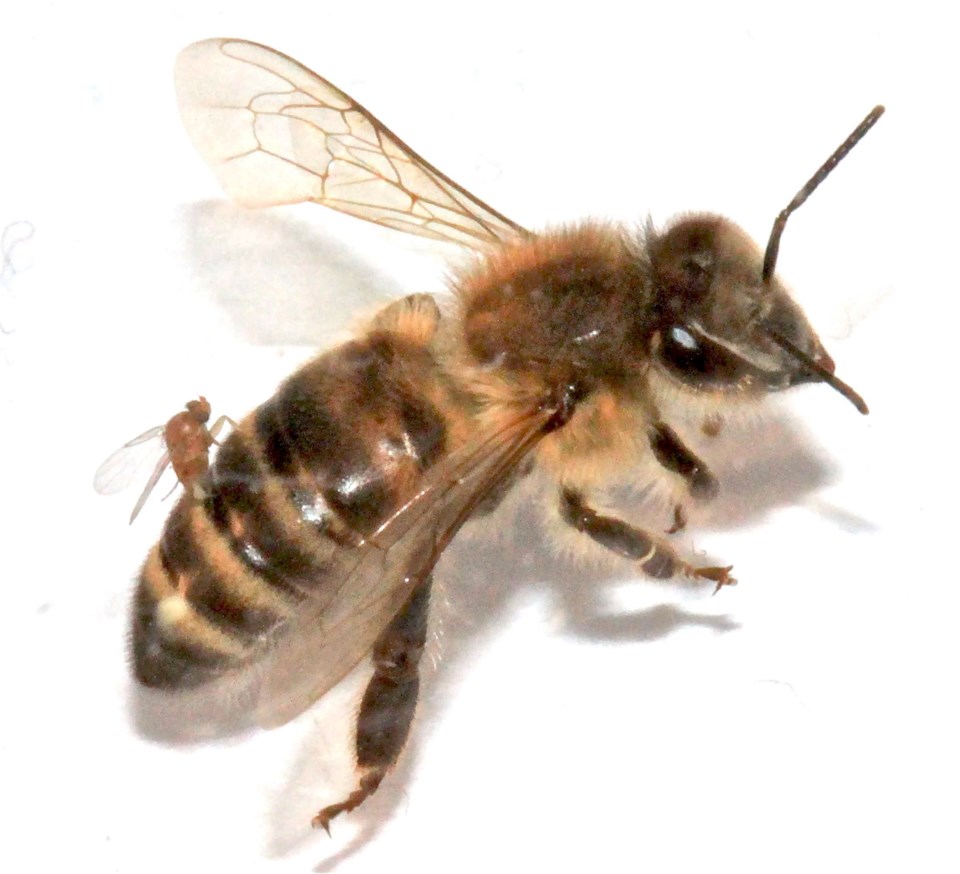Two more cases of zombie bees have been documented in B.C., but a provincial hive inspector says fears are overblown.
Cases of zombie bees or “zombees” — bees that have been infected by a killer parasite — have been confirmed in Metchosin and Steveston, according to a website tracking the parasite’s spread.
But there are much bigger threats to honeybee colonies that deserve attention, including environmental degradation, monoculture, pesticide use and varroa mites, said Wendi Gilson, an apiary inspector for the Ministry of Agriculture.
“It’s not anything for beekeepers to be concerned about at all,” she said. “Dragonflies kill more bees than this parasite does — so do songbirds grabbing a few bees for lunch.”
The first Canadian case of zombees was confirmed in Lantzville, near Nanaimo, in July.
The bees are infected by the parasite apocephalus borealis. The “zombie fly” injects its eggs into a honeybee’s abdomen. The larvae grow inside the bee, feeding on its muscles.
Affected bees appear disoriented, flying into lights at night. After they die, maggots erupt from their bodies, said John Hafernik, a biologist with San Francisco State University.
While zombie flies were known to affect bumblebees and wasps, Hafernik documented the first cases involving honeybees in 2012. He is keeping track of new cases through the website ZomBeeWatch.org.
But Gilson said the threat is near the bottom of a list of threats faced by honeybee colonies.
“It’s not even something you would notice; it’s of so little consequence,” she said.
More pressing is the lack of food for honeybees, due to agricultural shifts like the growth of monoculture — the planting of a single crop, which often doesn’t feed bees.
With fewer food sources, honeybees are more vulnerable when its favourite foods, such as blackberries and fireweed, produce less nectar in a season. That happened this season.
“There’s virtually no honey crop at all this year on Vancouver Island and the Gulf Islands,” Gilson said. “But we still have huge fruit and vegetable harvests, which means there was really good pollination. And we have the bees to thank for that.
“So I think in return, we should plant things for them to last through all the seasons.”
While individual gardens are helpful, a community-wide effort could make a significant difference, she said. Some honeybee-friendly plants include clover, heather, mint, oregano and sunflowers.



